Prevent the castle breakdown will help the timely replacement of the larva. It is this mechanism that is responsible for controlling the lock, identifies the key, opens access to a rotary mechanism that shifts the locking tongue. In addition to rare cases, the breakdown of the larva's lock springs is in the first place in wear - because it uses most often, several times a day.
When you need to change the larva
The larva is a code lock mechanism that serves to identify the key. The locking mechanisms of all locks are arranged in approximately the same, the difference is only in the "secret", which determines which key is suitable, and which is not. Thanks to this device, secrecy is provided: the door opens only by the key that is available at home or apartment.
The uniqueness of each larva lies in the set of pins located inside the cylinder
As a rule, the locks serve very long. But from all sorts of rules there are exceptions. Sometimes for one reason or another, the mechanism fails, the process of closing or disintegration is hampered. The key is not turning, it hits, encourages. Or, on the contrary, it rotates easily, but the lock tongue does not move. There are cases when the key cannot be inserted into the well, and sometimes, on the contrary, it is impossible to get it from there. The reasons for such a castle behavior are different:
- natural mechanism breakdown due to wear of parts;
- directed exposure from outside, mechanical damage, blow;
- attempts to open the door with another key or without a key at all;
- breaking into;
- the clogging of the keyfield is unauthorized objects, garbage, rust.
In all these cases, immediate replacement of the larvae is needed. If you do not do this in a timely manner, one day you can find yourself in front of the door to your own apartment, enter into which it is impossible.
Another common reason for replacing the larvae is the loss (or theft) of the keys. According to the testimony of key masters, most cases of the disappearance fall on weekends and holidays.
To restore the work of the lock, in the overwhelming weight of cases it is not necessary to change it entirely. It is enough to purchase a new larva with a set of keys and install it in place former. Such work is easy to do with independently using non-good tools. But sometimes it is better to turn to professionals, below we will look at such cases.
Types of larvae castle
"Secret" on castles of various designs have a different form and device. Therefore, first of all, you need to determine the type of lock. Here is the list of the most common and running types of locks.
- Cylinder. Very popular type of locking device. It is difficult to burst, which is important to ensure the safety of property. Experts identify several types of cylinder locks:
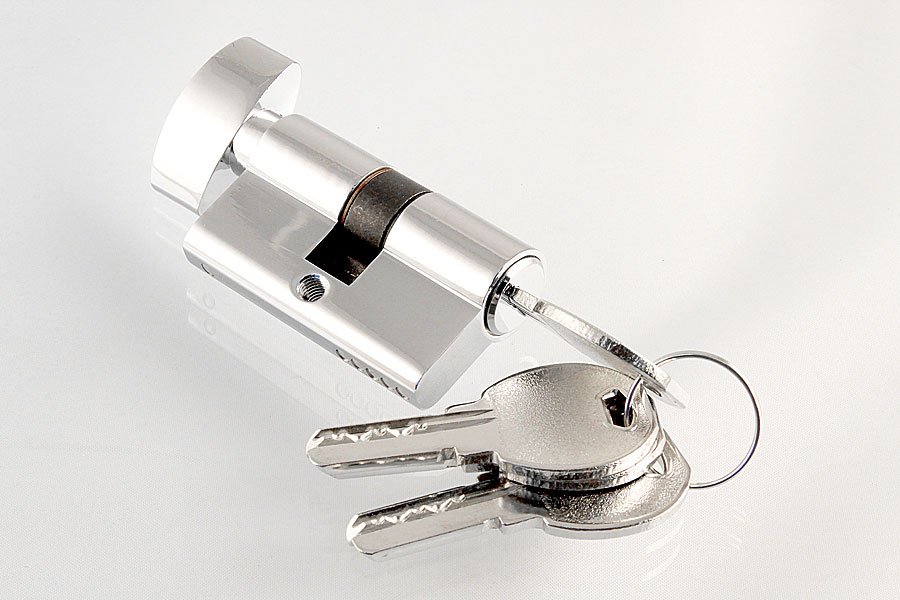
- Disk. Rotary disks play the role of the identifying device during latch. Related cylinder pick up quite difficult. Most often, the larva in such locks is not subject to replacement. Change completely castle.
The disk lock is pretty simple, but the effectiveness of this does not suffer
- Pottal. Rare, but still existing shut-off mechanisms of the English system. It is believed that pinpacities are inferior to cylinder in terms of reliability. However, perforated systems are used quite successfully.
- Cross. Not the most reliable type of lock. Experienced burglars open it with the help of a cruciform turnover, selected in size. Nevertheless, at the end of the last century, this type of locking devices was very popular. Many serve and today. Change the larva in such a castle is quite difficult. To do this, it is necessary to fully disassemble its housing. Most often, when an abnormal situation occurs, the lock is changed entirely.
In order to get to the castle larva with a cruciform key, you need to remove the mechanism from the door and open the protective case
- Complex castles. This group includes devices with a special degree of protection. As a rule, their maintenance is carried out by specialists of manufacturers. Therefore, the replacement of larvae and the secrets, which can be somewhat more expedient to entrust professionals.
It is appropriate to note that the locks are classified into mortise, mounted and overhead.This must be taken into account when choosing a new larvae, since all the attachment is different. Hinged locks do not understand, the replacement of the larvae is possible only in the workshop. Most divine locks are arranged in such a way that access to the larch is possible without disassembling the case. In the overhead designs for replacement, you must remove the lock from the door.
How to choose a new larva for a lock
The best way to choose a new "secret" is to unscrew the old and purchase its exact copy in the store. If the castle is produced by a large industrial company, then it must be labeled. The staff of the selling organizations is usually well versed in pictograms and symbols denoting the article articula. Consultants or managers will help you choose an identical or compatible larva for any castle.
If there is no possibility to take a "secret" in the store there, you need:
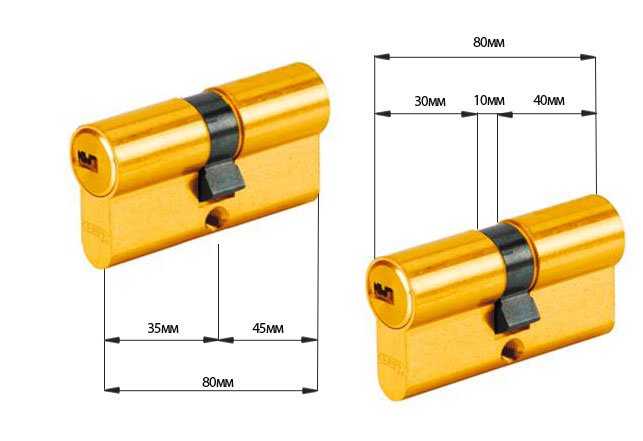
In addition to sizes, when choosing, the material and color of the larvae takes into account. Copper or steel cores are much longer than brass or duraluminum, but at the same time, of course, it is more expensive. Color is selected under the overall range of interior solutions.
According to the author, the optimal option can be considered the core made of stainless steel. This material has practically no restrictions on the duration of operation, it looks great on the doors and withstands the attempt on hacking. The price of the iron larvae is lower than the copper, and the surface coating (nickel or chromium) protects the mechanism from corrosion.
Video: How to choose a larva for a lock
What faults larvae can be repaired without replacement
From time to time (at least once a year), the larva needs to be cleaned and lubricated. It will protect it from failures in work. Liquid lubrication (type VD-40) not only rinsing the working cavity, but also lubricates the fuel parts - pins and pins. But after such a "washing" it is recommended to additionally lubricate the larva with graphite lubricant.
Universal household lubrication with low viscosity Guaranteed eliminates dry sections in the locking mechanism
If extraneous items have fallen inside the larvae - matches, clips and so on, they need to be removed and produce a larva with a vacuum cleaner. For seizures of small metal objects, it is convenient to use a magnet.
The most unpleasant thing that can happen is to enter the keyhole with a frozen liquid mixture - diluted cement, acrylic or silicone sealant, mounting foam or banal chewing gum. After soaring, these substances are converted into a monolithic mass, which is almost impossible to extract. Previously, such "tricks" used hooligans, wanting to harm residents. In such cases, the larva has to change. To protect the keyhole from ill-wishers, the screen is installed inside the core, which is fixed with the steel spring.
How to replace the larva castle in the door
Before you begin to work, you need to make sure that the necessary tools are available.
Required tools for replacing and repairing castle larva
To remove the secret of the lock case, you need to prepare simple tools in advance. They will probably find in every home:

Scum must be chosen with slots identical to the locking screw. Most often it is a PH2 cross. You can use a drill with nozzles or screwdriver, such as furniture, with a small number of revolutions and high power. The larva lock in the mortise lock is located in the end of the door canvase, on the locking plate. Measuring tools - Roulette, ruler or caliper - are needed to determine the exact dimensions of the original larvae. Theoretically, you can set the larch of a larger length than the door thickness (but not more than 5 mm). However, it is believed that at the same time the risk of penetration increases, since the protruding part is easy to break or cut and thus get access to the rotary mechanism.
Dismantling of the old castle larva
In order to remove the old larch, it is necessary:
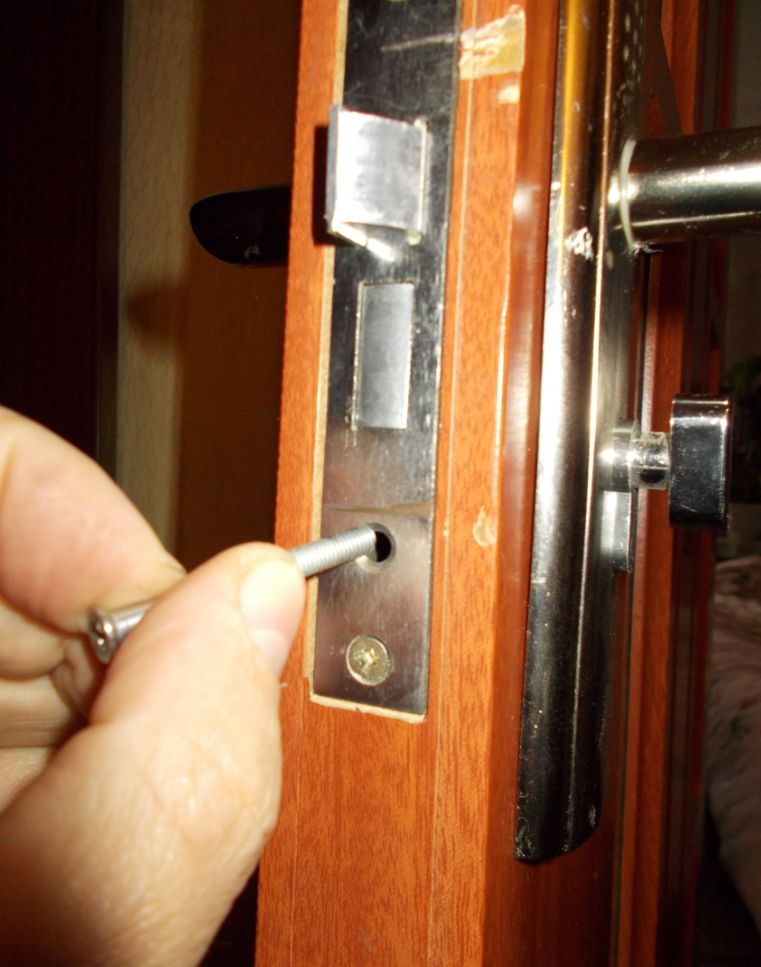
If you get the larva for some reason it is impossible (for example, the key jammed the key or broke the core mechanism), use an electric drill with a large diameter drill (about 10 mm). You need to completely drill the core. After that, turn the rotary mechanism and remove the larva, or rather, its residues. Despite the large size of the drill, the metal is easy to succumb, since larvae is made, as a rule, from brass or other alloy light non-ferrous metals.
Replacing the larvae in a cylindrical mortise castle with handles-lining
If the knobs with overlays are included in the door lock kit, then before starting repair it is necessary to release the screws of their mounting (4 pcs.) Thus, access to the larch will open.
Using the furniture screwdriver significantly accelerates the dismantling process.
After extracting the non-working cores, the released place must be installed new. To do this, the key is inserted into the larch and the cylinder is given in this position when the pusher tongue is immersed in the case of the larva. Then:
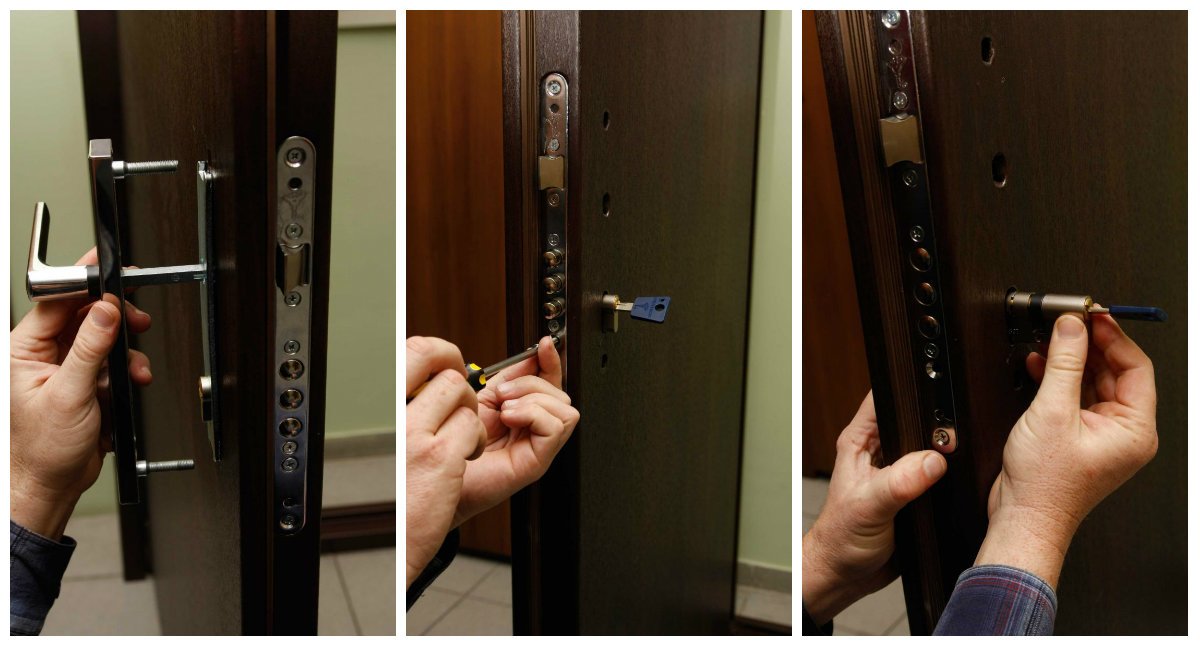
Video: Replacing the larvae in the mortise castle
Replacing the larvae in a cylindrical mortise castle without a handle
If the handles are not provided in the door cylindrical lock, the procedure remains the same. Only at the same time you do not need to remove the handles and lining. Access to the larva in such models is open, and the dismantling begins directly from unscrewing the larva lock in the end of the door canvase.
Replacing the larva of the overhead castle
The algorithm for the replacement of the larvae in the invoice lock is somewhat different compared to the mortise.
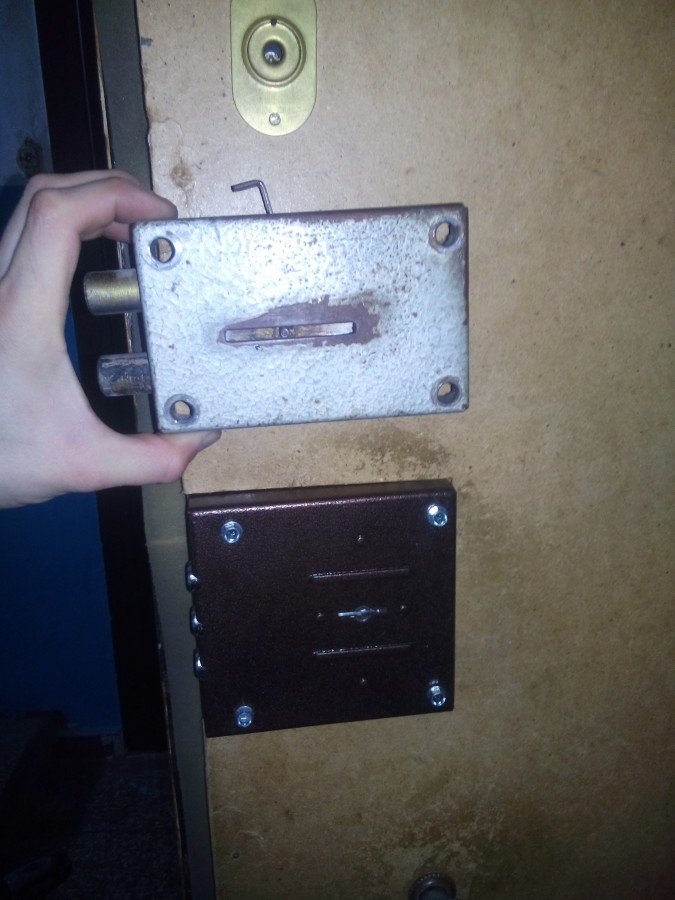
In addition to the four screws on the outer plane of the door, the overhead locks are sometimes fastened with additional screws on the end of the canvas. Before the final tightening of all the screws it is necessary to check the operation of the lock. For this, the gear scrolls both clockwise and against. If the locking mechanism works correctly, the screws are finally tightened, with a maximum force.
Video: Repair of the Patch Castle
Replacement of the larvae of the castle with a cruciform key
As mentioned above, the locks with cruciform keys gradually come out of fashion and use. In part, because of this, components are not always easy for them. Nevertheless, if necessary, you can try and replace the larch of such a castle. The procedure for the next.
- Pens and lining from the lock (if any) are removed. Four fixing screws are unscrewed on the inside of the door.
- On the front plate in the door of the door, two screws are released, which hold the castle in the canvas. The lock case is extracted from the door.
- All screws located outside the mechanism are unscrewed to remove the cover from the lock case. They can be from four to eight.
To mount the lock cover can be used from four to eight screws
- Twisted cross-shaped larva. It is usually attached to two screws.
- In place of the damaged "secret" is installed new and fixed with two screws.
The larvae under hexagon keys usually has two holes for fastening to the castle housing
- After checking the work, the castle is reverse assembly.
So that the castle served for a long time and without surprises, it is necessary to pay a little attention to him at least once a year. First of all, it concerns the purification of the larvae from pollution. Contact with an external environment: dust, moisture and temperature differences - all this affects the operation of the lock. Sooner or later, the dirt accumulates, and the castle can simply swam.
Wash for the lock is poured directly into the keyhole
Specialists are recommended periodically (depending on the operating conditions) to wash the inner cavity of the larva. To do this, there are special fluids that are easy to find in specialized stores and key workshops. The washing procedure is quite simple:
- cleaning spray from the canopy is poured inside the larva;
- the key is inserted to the entire depth;
- the key is removed and cleaned from the nanile dirt.
This operation is done until the key is completely cleaned. After prevention from the inside of the door, the same is done and outside.
The key can not rotate during cleaning. This will lead to the spread of garbage throughout the cylinder mechanism. Only progressive movement forward and backwards is allowed.
If the lock is subject to the lock on the entrance door, it is desirable to choose a flushing fluid with water-repellent and frost-resistant properties.
After cleaning the lock from dust and dirt, the key is dipped into lubricant, insert into the larva and turn in different directions. At the same time, the oil penetrates into the core and lubricates pins, springs and pins. Material (motor) or spontaneous oil is most often used as lubricant material. But it is better to use a special lubricant, designed specifically for castles of such a design. Surplus lubricants are removed by rag.

